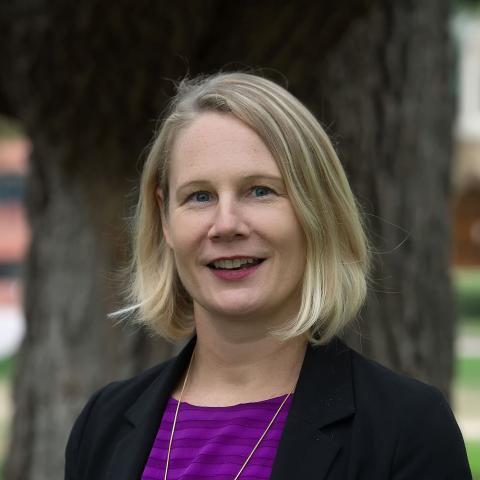Over the past few months, state-based health insurance marketplaces have navigated a largely successful second open enrollment period and a mostly uneventful first tax season for marketplace consumers. Yet state-based marketplaces continue to face important decisions, such as determining the size of their operating budgets and how to finance them.
Since the fall of 2010, state-based marketplaces have received approximately $4.3 billion in establishment funds under the Affordable Care Act. These grants were limited-time offers; as of January 1, 2015, no new funds can be awarded. States do have some time to spend down recent grants and may seek limited extensions to complete certain types of work, subject to federal restrictions. State-based marketplaces also receive some funding from Medicaid cost allocation.
But as federal funding disappears, state-based marketplaces have to raise their own revenue for operations. Although each state has approached this task differently, most use an assessment on health plans as their primary financing mechanism (see exhibit). This also is true of the federal government, which has established a 3.5 percent user fee on premiums for plans sold through HealthCare.gov.
Because marketplaces operate in a dynamic environment, many have been forced to reassess how they support themselves, leading states to pursue both incremental changes to their financing method as well as more fundamental shifts, such as transferring some aspects of marketplace operations to the federal government.
Fluctuations in Enrollment and Premiums Make Financing Difficult
After only a year and a half, premiums and enrollment remain moving targets that affect the total revenue that marketplaces generate. For example, Connecticut is bringing in less revenue than planned from their premium assessment this year because premiums increased less than expected. Lower monthly prices are good news for consumers, but this kind of uncertainty is a challenge for marketplaces that largely finance themselves with assessments on premiums.
Unpredictable enrollment also poses a challenge, as it did in Minnesota, where marketplace officials revised their financial sustainability plan and cut costs in response to lower-than-expected sign-ups.
Marketplaces Look to State Budgets for Help
Of the state-based marketplaces reevaluating their approaches to financing, some are turning to state appropriations to help bridge the gap. Rhode Island’s marketplace has requested $6.2 million in state funding for the upcoming fiscal year. State officials there also proposed a number of strategies for the marketplace to raise its own revenue, including a broad-based assessment currently pending in the governor’s budget and proposed legislation.
However, the state budget process involves its own complex politics and tradeoffs. For example, marketplace officials in Washington State have tentatively raised the per-member-per-month assessment as the state legislature debates reallocating the revenue raised from Washington’s 2 percent assessment to budget items apart from the marketplace. In Hawaii, the legislature granted the marketplace $2 million in supplemental funds, $8 million less than they had requested. As a result, the board approved a contingency plan to transfer operations to the federal government, subject to federal approval.
General Operating Costs Remain Undetermined for Nascent Marketplaces
Marketplace costs are also hard to forecast. During the most recent open enrollment period, marketplace officials in Colorado requested an additional $2.8 million to handle call center volume while Minnesota plans to spend more on outreach and enrollment than initially proposed.
Information technology has been another source of uncertainty. Marketplaces in Colorado and Massachusetts have had to spend more money than planned to address technical issues. Meanwhile, Maryland and Hawaii are currently engaged in disputes with their contractors over technical problems, while Vermont faced $9.7 million in additional costs after changing vendors midyear.
Moving Forward
As insurance markets evolve, state budget negotiations proceed, and policymakers slowly gain more data on enrollment, premiums, and operating costs, we expect state-based marketplaces will continue to adjust their operational priorities and explore their financing options. Some are building uncertainty into their financing models. New Mexico’s marketplace has pegged carrier assessments to its actual operating expenses, and legislators in Rhode Island are considering a similar approach. Meanwhile, state-based marketplaces will likely tighten their budgets for IT improvements, marketing, outreach, and enrollment assistance.
More generally, states that continue to face financing difficulties may pursue larger changes. The Hawaii marketplace is poised to follow the path of Nevada and Oregon and adopt a “supported state-based” marketplace model that remains state-run but leverages the federal IT platform for eligibility and enrollment. Lawmakers in Vermont are currently debating a similar move. To the extent that complicated marketplace financing questions persist, this sort of operational transition may become more attractive to other states seeking a sustainable path forward.
Exhibit. Assessment Levels on Individual Market Qualified Health Plans
| State | Long-term revenue source to fund marketplace operations | Insurer assessment levels: Percent of premium or per-member per-month (PMPM) fee |
Changes for 2016 | |
| 2014 | 2015 | |||
| Federally facilitated marketplace | 3.5% | 3.5% | ||
| California | Assessment only on plans offered through the marketplace | $13.95 PMPM | $13.95 PMPM | |
| Colorado1 | Broad-based assessment on plans inside and outside of the marketplace | 1.4% plus $1.80 PMPM broad-based fee | 1.4% plus $1.25 PMPM broad-based fee | The board is considering a range of options to increase its assessment and PMPM fee |
| Connecticut | Broad-based assessment on plans inside and outside of the marketplace | 1.35% | 1.35% | |
| District of Columbia2 | Broad-based assessment on plans inside and outside of the marketplace | — | 1% | |
| Hawaii | Assessment only on plans offered through the marketplace | 2% | 2% | The marketplace has asked the board to approve an increase in the issuer fee to 3.5%, effective July 1, 2015, though a contingency plan to transfer operations to the federal government is pending approval |
| Idaho | Assessment only on plans offered through the marketplace | 1.5% | 1.5% | The marketplace is raising the premium assessment to 1.99% |
| Kentucky* | Broad-based assessment on plans inside and outside of the marketplace | 1% | 1% | |
| Maryland* | Broad-based assessment on plans inside and outside of the marketplace | 2% | 2% | |
| Massachusetts3 | Assessment only on plans offered through the marketplace | — | 2.5% | |
| Minnesota | Assessment only on plans offered through the marketplace | 1.5% | 3.5% | |
| Nevada | Assessment only on plans offered through the marketplace | $4.95 PMPM | $13 PMPM | Adopted a 3% fee on the presubsidized premium for QHPs |
| New Mexico4 | Broad-based assessment on plans inside and outside of the marketplace | — | Assessment pegged to insurer market share and SBM operating expenses | |
| New York* | Broad-based assessment on plans inside and outside of the marketplace5 | Varies by region | Varies by region | |
| Oregon6 | Assessment only on plans offered through the marketplace | $9.38 PMPM | $9.66 PMPM | |
| Rhode Island7 | To be determined | |||
| Vermont8 | State appropriations | |||
| Washington9 | Assessment only on plans offered through the marketplace | — | 2% plus $4.19 PMPM | In light of pending legislation to redirect the 2% assessment to the state general fund, the marketplace has set a placeholder PMPM fee of $13.66 |
* Kentucky, Maryland, and New York applied an existing assessment on insurers throughout the state to marketplace operations.
1 Colorado is assessing a $1.25 PMPM fee on all plans offered inside and outside of the marketplace in addition to a 1.4% assessment only on marketplace plans, as well as using revenue from other sources.
2 D.C. is unique among state-based marketplaces in that it assesses a fee on a variety of health-related insurance products including long-term care, disability, vision, dental, and hospital indemnity.
3 The Massachusetts Connector temporarily suspended charging its existing insurer fees for calendar year 2014, but reintroduced it in 2015. Massachusetts is charging a different fee of 3% on insurers offering ConnectorCare plans, which offer additional cost-sharing assistance for lower-income individuals.
4 New Mexico’s assessment on carriers varies based on their market share (calculated by the total of their major medical and Medicaid managed care premiums written on and off of the marketplace in the state) and is pegged to the annual operating expenses of the marketplace.
5 Funding for the New York’s marketplace ultimately comes from the state budget, using revenue from New York’s Covered Lives Assessment, established by the state’s Health Care Reform Act.
6 Oregon and Washington also have broad-based assessments on insurers selling both inside and outside of the marketplaces. However, Cover Oregon and the Washington Health Benefit Exchange retain the assessment only from the plans sold through the marketplaces.
7 Legislation giving the Rhode Island Department of Health the authority to establish a broad-based assessment to fund the marketplace is currently under consideration in the legislature.
8 Vermont is temporarily funding its marketplace through June 2015 via its State Healthcare Resources Fund, which is funded through an insurer assessment, employer assessment, and other revenue streams. Moving forward, marketplace officials plan to fund ongoing operations by submitting the marketplace budget for inclusion in the Governor’s recommended budget. This would require the approval of the state legislature.
9 Washington instituted an additional $4.19 PMPM assessment on marketplace carriers to supplement its share of the state’s existing 2% premium tax.







